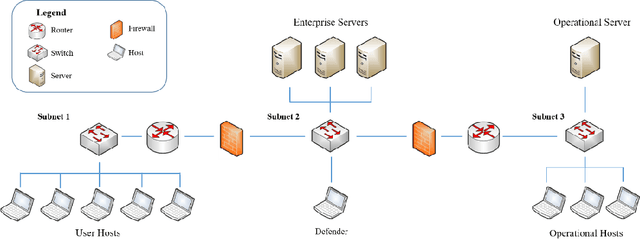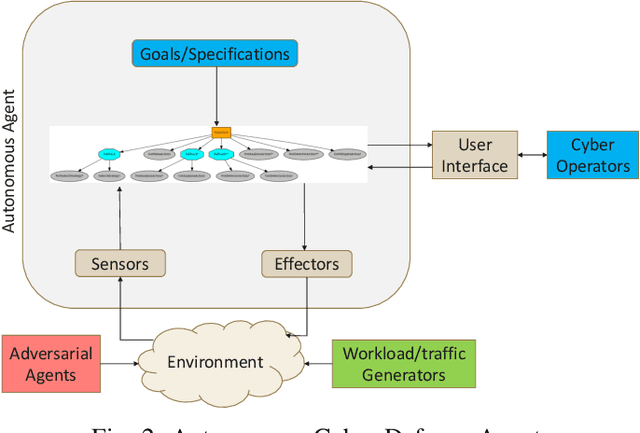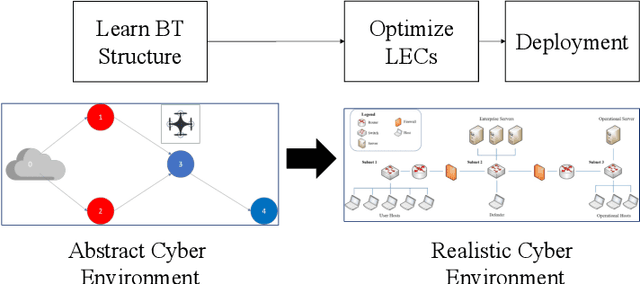Designing Robust Cyber-Defense Agents with Evolving Behavior Trees
Paper and Code
Oct 21, 2024



Modern network defense can benefit from the use of autonomous systems, offloading tedious and time-consuming work to agents with standard and learning-enabled components. These agents, operating on critical network infrastructure, need to be robust and trustworthy to ensure defense against adaptive cyber-attackers and, simultaneously, provide explanations for their actions and network activity. However, learning-enabled components typically use models, such as deep neural networks, that are not transparent in their high-level decision-making leading to assurance challenges. Additionally, cyber-defense agents must execute complex long-term defense tasks in a reactive manner that involve coordination of multiple interdependent subtasks. Behavior trees are known to be successful in modelling interpretable, reactive, and modular agent policies with learning-enabled components. In this paper, we develop an approach to design autonomous cyber defense agents using behavior trees with learning-enabled components, which we refer to as Evolving Behavior Trees (EBTs). We learn the structure of an EBT with a novel abstract cyber environment and optimize learning-enabled components for deployment. The learning-enabled components are optimized for adapting to various cyber-attacks and deploying security mechanisms. The learned EBT structure is evaluated in a simulated cyber environment, where it effectively mitigates threats and enhances network visibility. For deployment, we develop a software architecture for evaluating EBT-based agents in computer network defense scenarios. Our results demonstrate that the EBT-based agent is robust to adaptive cyber-attacks and provides high-level explanations for interpreting its decisions and actions.
 Add to Chrome
Add to Chrome Add to Firefox
Add to Firefox Add to Edge
Add to Edge